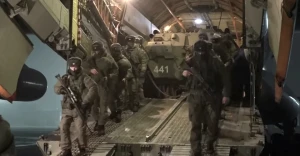
September 18-25 live war map: Vuhledar retreat, Russia breaches Ukrainian defenses near Pokrovsk and Toretsk, advancing toward Kurakhove
Fighting in eastern Ukraine has intensified, with Ukrainian forces neutralizing over 1,500 Russian soldiers in a day. The majority of the clashes took place in the Kurakhove and Pokrovsk directions, requiring urgent military decisions
Ukrainian Forces will have to retreat from Vuhledar
Since Russian troops occupied Novomykhailivka at the end of April this year, they have gradually advanced more than 18 kilometers to the eastern outskirts of Vuhledar, a position they were pushed back from in the winter of 2023. Recently, the first assaults on the town occurred; however, they failed to achieve a breakthrough, prompting continued efforts to encircle the Ukrainian defenders, who have likely begun a gradual evacuation.
If the Ukrainian Defense Forces do not initiate a successful counteroffensive soon, Vuhledar may be lost in the short term. Russian troops are nearing the point of driving the Ukrainian Armed Forces out of the Vuhledar bridgehead, which would enable them to secure the railroad connection from Donetsk to Mariupol.
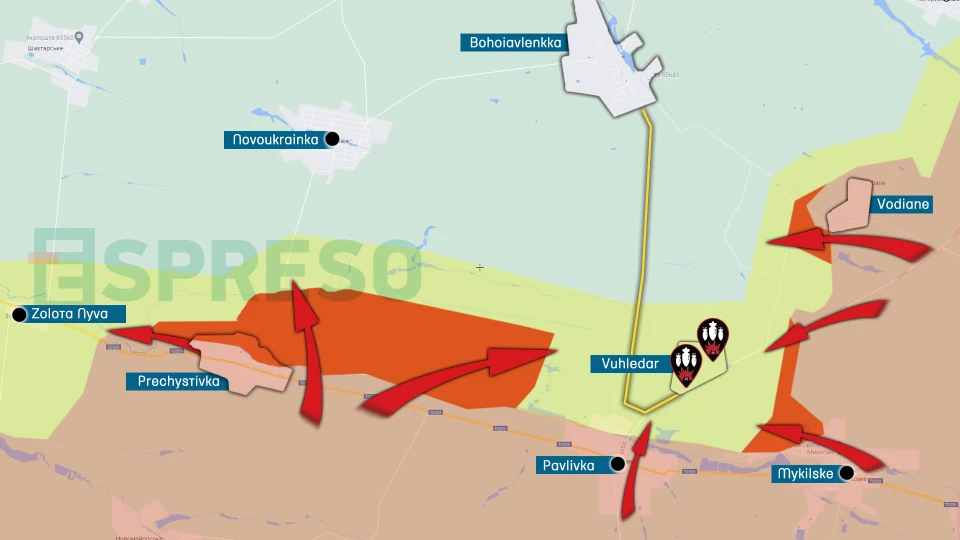
Photo: Espreso map of hostilities for September 18-25
This week, north of Vuhledar, Russian forces successfully captured Pivdenodonbaska mine No. 3, while the battle for mine No. 1 continues, presenting challenging prospects for the Ukrainian Armed Forces. From either the occupied Vodiane or the mines, Russian troops need to advance just over 4 kilometers to fully cut off the logistics to Vuhledar, which currently relies on supply routes through Bohoyavlenka.
An even more precarious situation has developed to the west of Vuhledar, where Russian forces have successfully crossed the Kashlahach River, establishing a ten-kilometer bridgehead between Prechystivka and Novoukrainka. The Russians are advancing toward the western outskirts of the town, but before making significant progress, they are expected to cut off the road from Bohoyavlenka, which is less than 2 kilometers away. Therefore, the withdrawal of the 72nd Brigade from Vuhledar is a preferable decision to avoid losing one of Ukraine’s best brigades.
For the first time since the onset of the war, Russia has begun using KAB bombs in attacks on Zaporizhzhia. This development indicates not only the modernization of gliding bombs that can now travel greater distances but also reflects the terrorist state's long-term strategy to intensify pressure on the southern front in both the Zaporizhzhia and Donetsk regions.
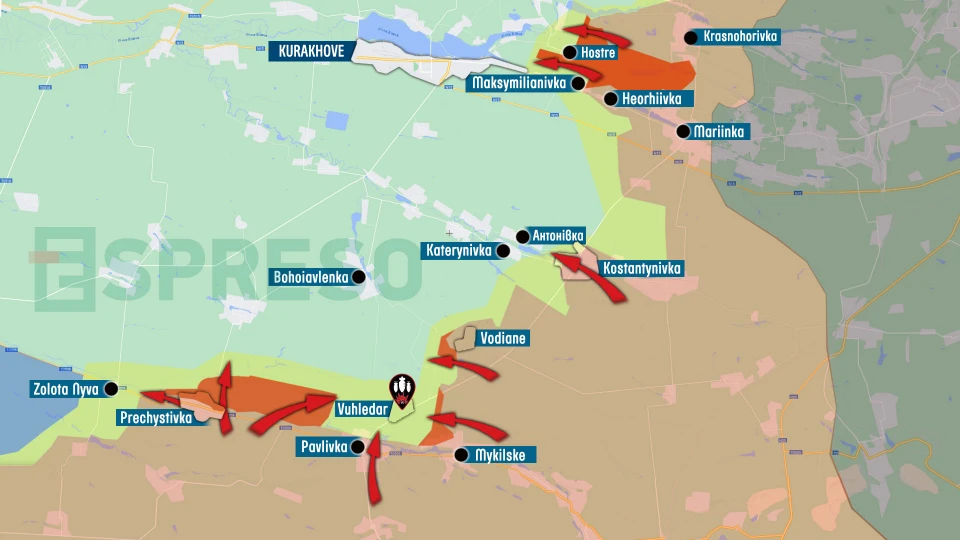
Russian troops prepare to storm Kurakhove
After the occupation of Krasnohorivka, the Russian army successfully advanced 8.5 kilometers into Ukrainian defenses near the village of Hostre, just 3 kilometers from the outskirts of Kurakhove, in a matter of days. On this section of the front, Russian troops launched their assault in three columns: along the Lozova River, towards Hostre, and from Heorhiivka to Maksymilianivka. The stark superiority of Russian forces in both manpower and mechanized units compelled the Ukrainian Defense Forces to retreat and establish a new defensive line through Oleksandropil and Kurakhove. Both positions are notably vulnerable; Kurakhove faces potential attacks not only from the east but also from the south, while Oleksandropil is at risk of being encircled from three sides. Currently, Ukrainian forces have approximately a month to fortify Kurakhove in preparation for the impending defense
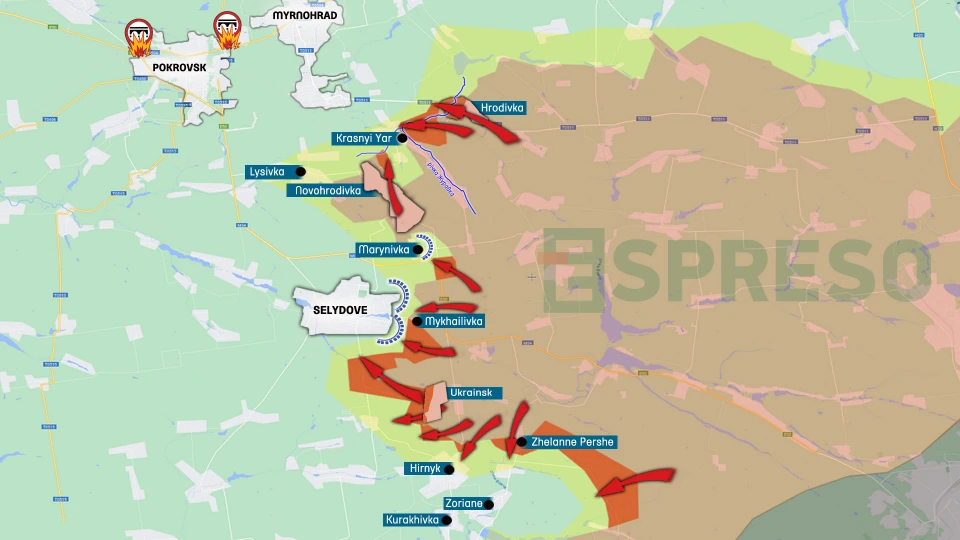
Pokrovsk front gradually bends
The Ukrainian Armed Forces have been retreating from the Nevelske pocket for the past two weeks, abandoning at least 6 kilometers of territory. The current defense line now extends through Zhelanne Druhe, where Russian troops are attempting to infiltrate in small groups, as well as along the northern bank of the Lozova River, where Ukrainian soldiers continue to hold the outskirts of Krasnohorivka. In the coming days, the defense line is expected to be fortified another 6 kilometers to the west, encompassing Hirnyk, Zoriane, Kurakhivka, and Oleksandropol, as well as along the Vovcha River. Despite the potential for Russian forces to assault this fortified area from three sides, the position is sufficiently robust to withstand attacks for an extended period.
However, this plan has a significant vulnerability, particularly due to the Russian offensive between Hirnyk and Selydove, made possible by the complete occupation of Ukrainsk. This maneuver poses a threat to the defenses of both Hirnyk and Selydove. In this area of the front, Russian troops have breached Ukrainian defenses and are advancing westward, effectively cutting off the Selydove-Hirnyk road. With the potential to reach Tsukuryne, they aim to expand their operational space for the offensive. This would enable them to flank the defenders of both towns, allowing Russian forces to potentially reach the northern outskirts of Kurakhove. Consequently, urgent stabilization measures are needed in this critical section of the front.
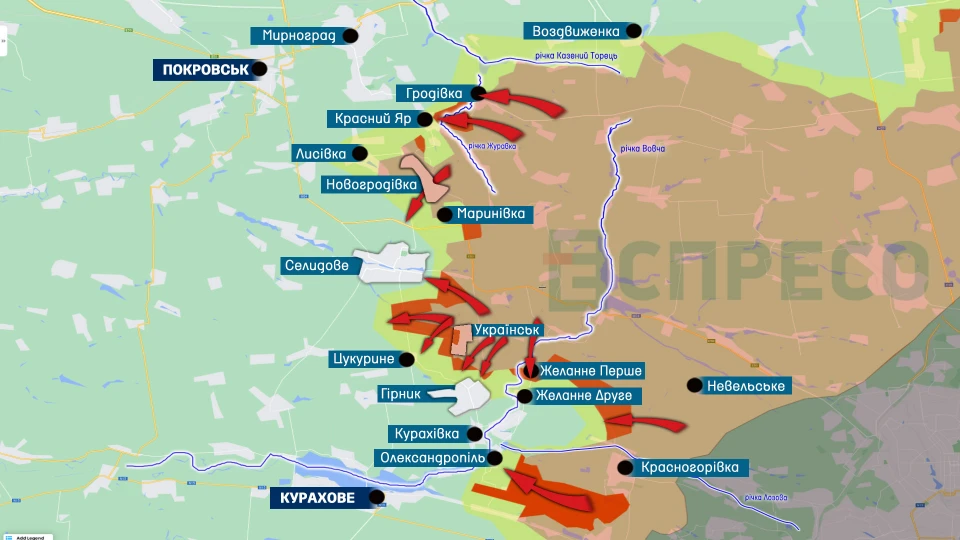
To the north of Selydove, the Ukrainian Armed Forces are successfully holding back Russian troops in the besieged Marynivka. However, the advancing Russian offensive south of Novohrodivka is likely to eventually bring them to the northern outskirts of the town.
In the situation near Pokrovsk, the Ukrainian Armed Forces have unfortunately struggled to consolidate their defenses along the Vovcha River in the Hrodivka area. Last week, Russian troops crossed the river and have since expanded their control to Mykolayivka, the last village before Myrnohrad. Ukrainian defenders in the villages of Krutyi Yar and Krasnyi Yar now find themselves caught between the two advancing armies and are likely to be forced to retreat towards Myrnohrad in the near future.
Russian troops break through to Toretsk center
After the Ukrainian Armed Forces launched a counterattack in New York, successfully relieving Ukrainian troops holding the central part of the village, Russian forces managed to push the Ukrainian Defense Forces back to the northern outskirts a few weeks later. Simultaneously, they are advancing north along the N-20 highway towards Kostiantynivka and Kramatorsk.
On a neighboring section of the front, Russian troops continue their assaults aimed at encircling Toretsk from both the north and northeast. On the southern flank, Russian forces have captured a significant portion of territory east of Nelipivka and have approached the outskirts of the village.
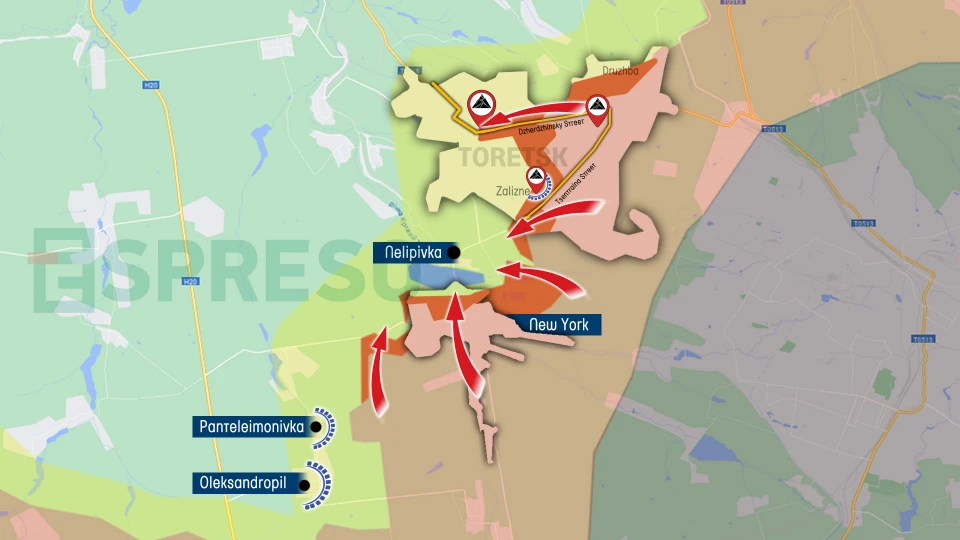
In Toretsk itself, Russian forces have occupied all the waste heaps in the eastern part of the town and launched an offensive from Zalizne and Pivdenne towards the central districts. They have managed to establish a foothold near the intersection of Dzerzhynskyi Street and Shakhtari Avenue. In the northern districts, Russian forces have expanded their control towards Krymske and have nearly completely occupied the village of Druzhba. Despite this, the defenders of Toretsk still possess sufficient resources to deter the Russian advance.
Chasiv Yar and Klishchiivka
Despite a large number of attempts to break through the Siverskyi Donets Canal both north and south of Chasiv Yar, the Ukrainian Forces managed to repel all assaults and eliminate all temporary Russian bridgeheads. Russian forces keep trying to expand their access to the canal to increase the possibility of forcing it in many places. While last week they focused on the northern flank near Kalynivka, recently most of the assaults have been south of Ivanivske and in Klishchiivka. Although Klishchiivka has long been wiped off the map, the Ukrainian Armed Forces hold the dominant heights to the west of the village, which allows them to hold back Russian troops. Recently, however, there has been a steady trend of Russian advancement in the area of these heights. Some of them have now moved into a gray, uncontrolled zone.
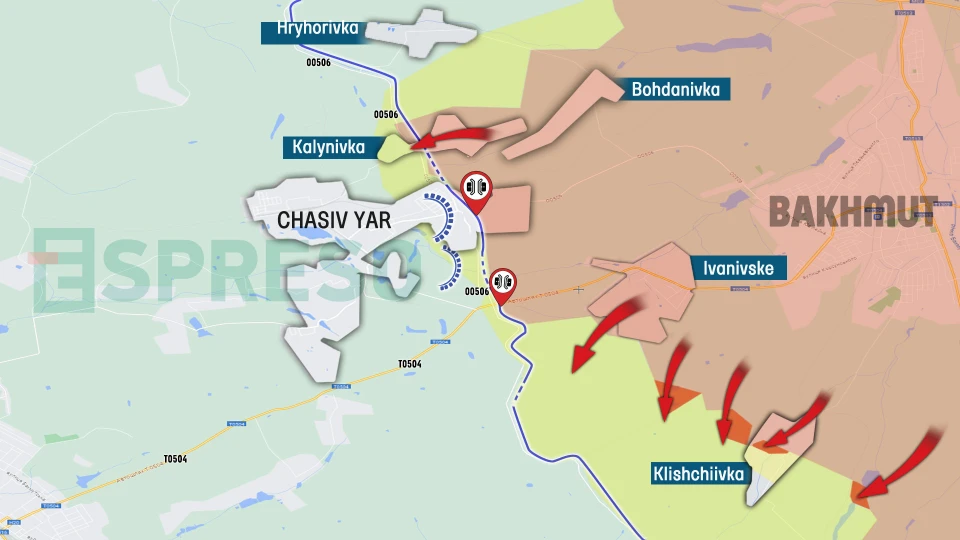
Losing last villages in Luhansk region
Russian forces have intensified their assault on Makiivka and Nevske, two villages on the left bank of the Zherebets River, aiming to cross the river and continue their advance towards Oskil. Currently, these villages are effectively lost, and the Ukrainian Armed Forces are implementing stabilization measures to prevent Russian troops from forcing the river. Should Makiivka and Nevske fall, only a few largely destroyed villages will remain under Ukrainian control in the Luhansk region.
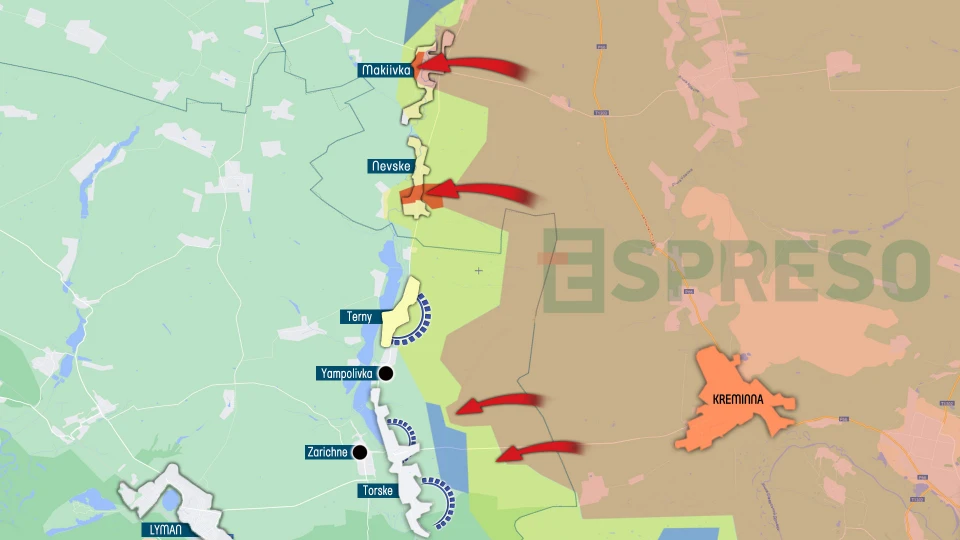
To the north, Russian troops continue their advance from Pishchane towards the Oskil River and have approached the village of Kruhliakivka on the eastern bank. An assault on this village is expected to commence soon, facilitating the expansion of the bridgehead along the river to the south and north. Borova is projected to become the main target in this area of the front over the next six months.
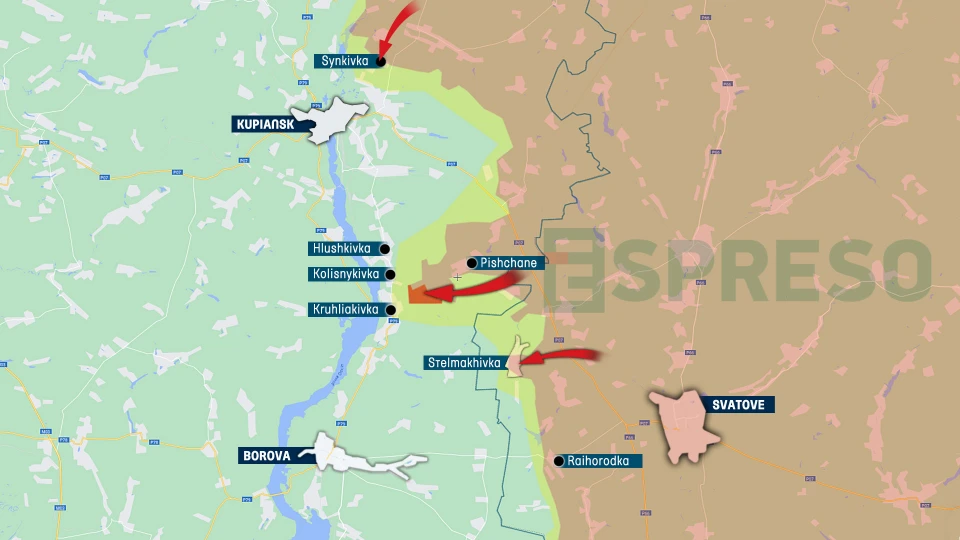
Vovchansk de-occupation
Ukrainian intelligence units have successfully liberated the last of the 30 buildings at the Aggregate Plant in the central part of Vovchansk. This facility was critical for Russian troops, and its liberation may prompt them to initiate a gradual retreat to their borders in this area of the front.
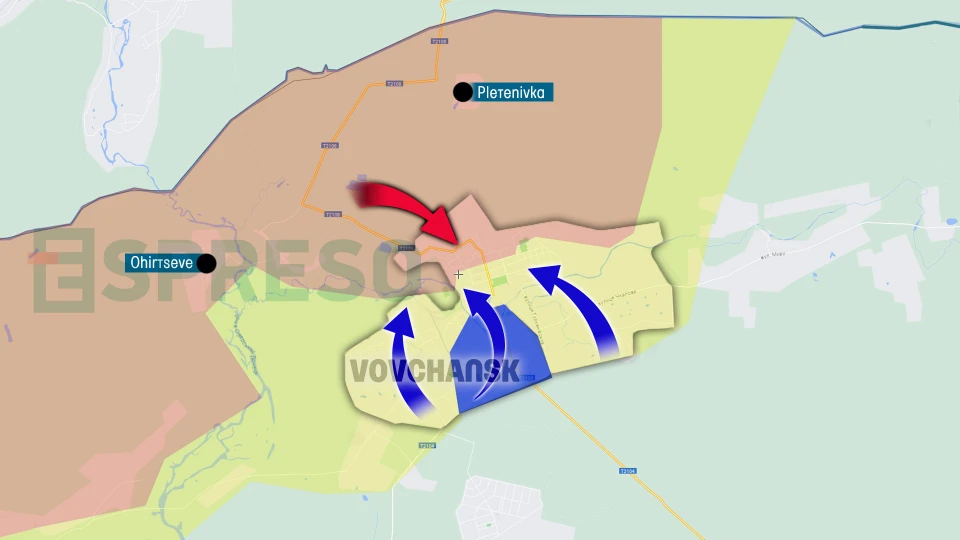
Putin’s orders for Kursk region liberation to remain unfulfilled
The most intriguing news from the Kursk front is largely going unnoticed. Ukrainian soldiers are maintaining a low profile, while Russian forces seem ashamed to acknowledge their defeats. Despite this, Russian officials have boisterously claimed to have repelled numerous attempts by the Ukrainian army to breach the border in various regions, not just in Kursk. However, the veracity of these claims is questionable, and we await official reports for a clearer picture.
On the frontline east of Sudzha, Russian forces are continuing their offensive. After capturing Borky, they attempted to launch an attack on Plekhovo but were met with resistance from Ukrainian soldiers who successfully repelled the assaults. Further north, the Russian military has expanded the gray zone near Bolshoye Soldatskoye and Kromskiye Byky. However, some Russian units remain encircled in Sheptukhovka, Kireevka, and Pogrebki, where they are attempting to mount attacks. In response, the Ukrainian Defense Forces are counterattacking, effectively outflanking the Russian troops. The situation is rapidly evolving, making it difficult to accurately depict on maps.
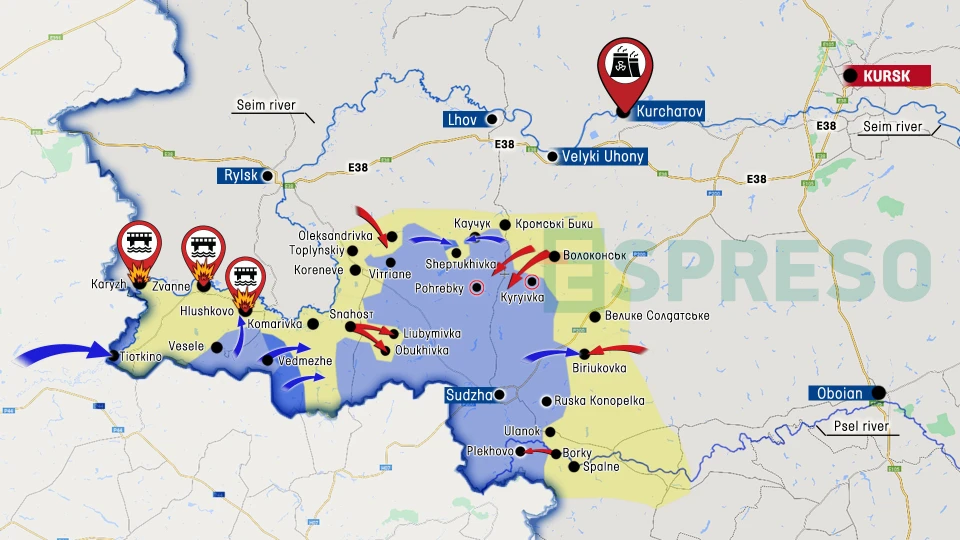
To the east of Korenevo, Russian forces attempted to advance from Aleksandrovka towards Vetreno but were unsuccessful.
Active counterattacks are underway on the western section of the front in the Glushkovsky district. On one side, the Russian Armed Forces are attempting to sustain their counteroffensive from Snagost towards Lubimovka and Obukhovka. However, they are being closely pursued by the Ukrainian Armed Forces, which have expanded their control in the area near Glushkovo, successfully taking Yelizavetovka and Sergeevka and re-entering Apanasovka. Currently, Russian troops have partially retreated to Glushkovo and are working to establish a defensive position.
At the same time, Russian forces have managed to concentrate just over 40,000 troops, far short of the 70,000 to 80,000 needed for effective operations. This gives the Ukrainian Armed Forces approximately a month and a half to successfully complete their operations in the Glushkovsky district and strengthen their defenses along the Seim River.
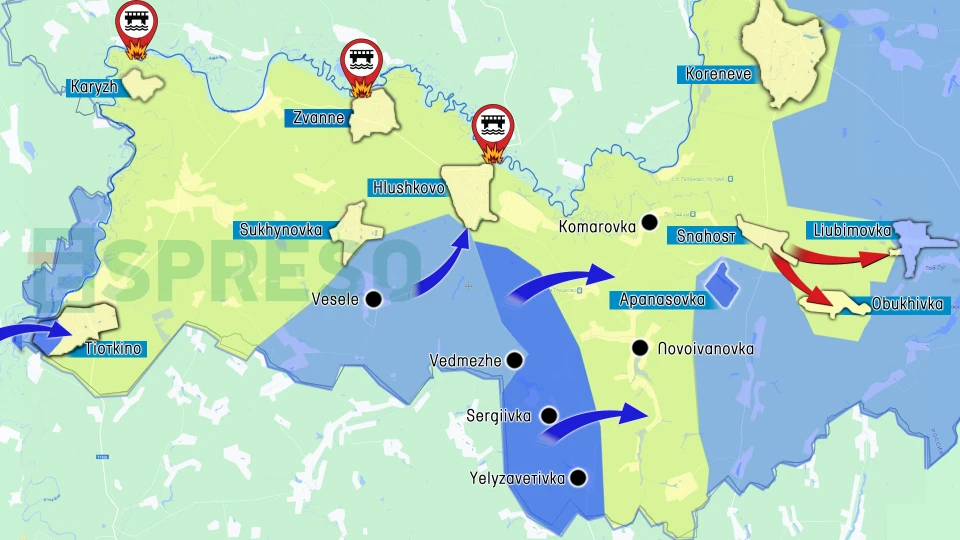
Historic Strikes on Russia
An unknown Ukrainian weapon has reportedly destroyed 90% of a heavily fortified ammunition depot in Toropets, Tver region, which contained enough shells and missiles to sustain military operations for 2 to 3 months. This incident marks the largest destruction of an ammunition depot in the history of warfare. Shortly thereafter, another depot in the nearby village of Oktyabrsky, also in Tver region, was 78% destroyed; this facility had primarily received its ammunition supplies from North Korea.
In Tikhoretsk, Krasnodar region, Ukrainian forces targeted not only a depot containing North Korean munitions but also a military unit and an airfield. Notably, intelligence operations facilitated the strike on the depot while approximately 2,000 tons of ammunition were being unloaded.
Additionally, the Ukrainian Armed Forces struck a large ammunition depot near Mariupol. Drones targeted a tugboat and a barge in Taganrog Bay within the Azov port. In the Rostov region, Ukrainian Neptune missiles destroyed the Kamensky plant, which is known for producing rocket fuel for ballistic missiles.
The maps were created using data from the General Staff of Ukraine’s Armed Forces and other verified sources. However, they are approximate and primarily reflect trends in the war zone.
- News










